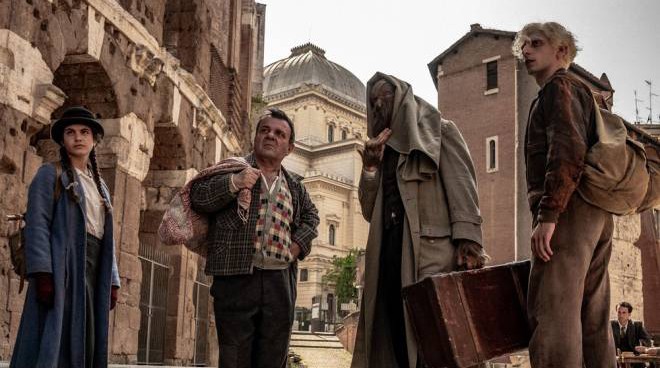THE CARD COUNTER
Diary of a Card Counter
The Card Counter in a way sums up the best of Paul Schrader’s range: it undeniably belongs to the screenwriter of Scorsese’s films, its elegance meets the expectations for a film of the director of First Reformed; yet, it manages to avoid redundancy, and maintains a distinct trait of its own.
 |
A character driven screenplay, as many of Schrader’s films, it builds on the mistery surrounding its lead, William Tell (Oscar Isaac) and his shadowy past, as he tries to seek a form of redemption in helping a young boy (Tye Sheridan) that has indirectly been affected by events similar to his own.
An unpredictable outsider reminiscent of Travis Bickle from Taxi Driver, but more methodical and rational, a character that acts as narrator in Schrader’s signature voice-overs but whose psyche remains out of the viewer’s sight, a feature that further increases the fascinating aura of this contemporary dark romantic hero.
The one negative note is the marginal role of Willem Dafoe’s character, central to the story but that hardly has any screentime, and of whose motivations hardly any clue is provided.
It would be impossible to avoid a comparison with Schrader’s previous film First Reformed, but what emerges is that the two films are non-identical twins. Both Ethan Hawke’s Reverend Toller and Oscar Isaac’s Will Tell are ex military who turned to a different life, oppressed by the evil that haunts and surrounds them, albeit it is the evil of man directed at two different targets: nature in First Reformed, fellow men in The Card Counter. In the same vein as the 2017 film tackles climate change, Schrader’s latest deals with the psychological trauma endured by both victims and perpetrators of the infamous tortures that happened in Guantanamo and other secret operations.
Similarly to the Reverend, the gambler writes a diary, which acts as a continuing homage to Bresson’s films. While First Reformed is strongly derivative of Diary of a Country Priest, The Card Counter references Pickpocket, although in a more subtle and less persistent manner.
On the other hand, the way the non-linearity of the narration is depicted constitutes another interesting element. If Mishima employed a colour code to distinguish its chronology, this film adopts different angles of lens, in order to thus convey the insanity of the past situation that is often referenced throughout the film.
Another feature worthy of special mention is the electric film score by Robert Levon Been and Giancarlo Vulcano, a synth-based soundscape that sets a bleak and yet awe-inducing mood that further distinguishes the film.
The perception upon having seen this film is of having seen a truly magnificent work, that even surpasses under several aspects Schrader’s previous film directions. It never ceases to engage with the viewer and to maintain that same suspense that characterises the card games that are featured, and does so without being a violent, action packed blockbuster. It’s a form of charm that few films have maintained, a formula that is proven to be still effective by The Card Counter.


Comments
Post a Comment